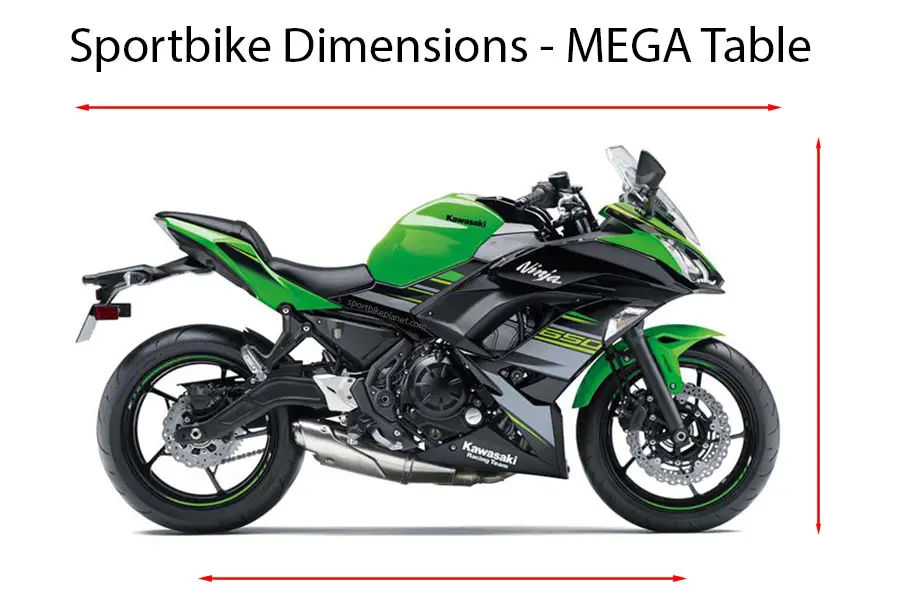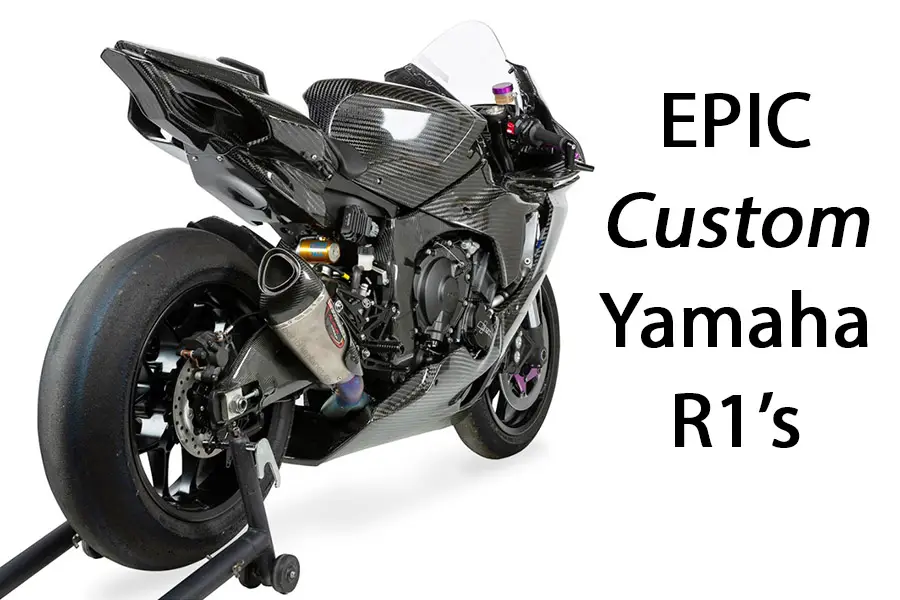When riding a motorcycle the most important bit of safety equipment is your helmet and in order for the helmet to do its job properly it needs to fit your head perfectly.
This can mean spending a lot of time trying on different brands of helmet to get the right fit, but it is definitely worth the trouble.
Helmets need to fit snug around the head but too tight and you will be uncomfortable which can be painful and distracting on the road; too loose and the helmet won’t do its job of protecting you in the event of an accident.
Let’s get into this in a bit more depth and what you can do to make sure you get an appropriately fitting helmet.
Are Motorcycle Helmets Supposed To Be Tight?
Motorcycle helmets are supposed to feel tight when wearing them. The helmet should feel snug all the way around the head and face with no gaps. There should be no movement up or down or side to side when the helmet is on and secured.
The aim is to have the helmet feel like an extra layer around your head, it needs to be comfortable. If the helmet feels like it is giving your head a hug then you are on the right track.
A tight helmet is always safer than a loose one however, the helmet should not be so tight that it causes pressure points and becomes uncomfortable over a period of time while wearing it.
There is no need to go a size smaller to make sure that your helmet is incredibly tight, hard to get on and leaves you with red marks when you take it off.
Why Do Motorcycle Helmets Need To Be Tight?
A motorcycle helmet has one purpose and that is to protect your head. In order for it to be able to do so, it needs to fit properly. That means it needs to be tight on your head and have no movement, a loose helmet is useless as a protective item.
Helmets work by absorbing the energy in an accident instead of your head being subjected to the full impact.
There are a couple of things that could happen if your helmet isn’t tight:
- Your head can be subjected to several smaller impacts inside the helmet as it rattles around loose inside.
- The helmet could swivel around leaving the back of your skull or side of your head to take the brunt of an impact.
- If a helmet can twist it can cause serious injury to your neck.
- The helmet could come off altogether leaving you completely unprotected.
How Should A Motorcycle Helmet Fit?
A motorcycle helmet should feel snug all the way around the head, there should be no gaps and no pressure points. Your cheeks should be pushed up so that you are not able to chew gum while wearing your helmet.
You should also have full visibility out of the eyeport, with the top of the helmet sitting midway down your forehead not obstructing your view.
It should cover the base of your skull and around to below your jaw bone and chin to offer the maximum protection possible.
The chin bar and face shield should not be touching your face.
There is no exact science for fitting a motorcycle helmet as everybody has a different head shape and size however, there are some simple tips you can follow to make sure you get the perfect helmet for you.
How Do I Find A Proper Fitting Helmet:
Go Into A Store
Try to go into a store to purchase a helmet or at least go into a store where you can try a range of helmets prior to purchasing online.
While you can measure your head and follow a size guide online, it will not be accurate for you individually accounting for your head shape.
Measure Your Head
Use a soft tape measure to measure your head and this will give you a base point to start with in terms of sizing.
Remember that every manufacturer has slightly different sizing requirements so a Medium in one brand may be a Small in another. Be sure to check with each brand their own sizing guide.
To measure your head take the tape measure and wrap it horizontally around your head so that it fits approx one inch above your eyebrows.
You can use this reading then to compare against size charts, if you are between sizes start by trying the smaller of the two.
Understand Your Head Shape
There are three main head shapes that helmet manufacturers cater too:
- Round Oval
- Intermediate Oval
- Long Oval
There are several combinations and variations in between these main shapes but knowing roughly where you fit in will help you radiate towards certain brands over others.
For example Arai helmets are very good for producing round oval helmets, whereas AGV helmets lean towards a more long oval head shape.
If you therefore keep trying on helmets in Arai’s range and find that there are gaps at the side of your head, maybe you need to try an AGV where the helmet might suit your long oval head shape better.
Trying On The Helmet
Over the years the helmet opening has got smaller, this is to improve the levels of wind noise that the rider has to endure as well as increasing the fit and protection of the helmet.
So be prepared to use the chin straps to stretch the helmet open a little bit to get the largest part of your head in.
Pull the helmet over the crown of your head as opposed to your forehead.
Once the helmet is on ask yourself the following:
- Can you feel the helmets lining all the way around your head?
- Are the cheek pads pushing in your cheeks and pushing them slightly upwards? Could you chew gum?
- Is the top of the helmet resting on your forehead?
- Can you feel any gaps anywhere?
- Are there any pressure points?
- Is the helmet uncomfortable?
- Can you move the helmet around easily, either up and down or side to side?
Take Your Time
Next wander around the store wearing the helmet, giving it a good 10 minutes before taking it off. Do the chin strap up and wear the helmet as if you were out riding.
Ensure that there is no movement with the helmet on, by tugging it in all directions.
You should also not be able to push your finger between the brow and helmet liner.
Don’t be pressured by store staff, take your time and do all the proper checks. This helmet has the potential to save your life and therefore it needs to be right.
Finally remove the helmet and check for any red sore spots, if there are any then the helmet is likely too tight and won’t be suitable.
You should not have any pressure points after wearing the helmet for a period of time, the key is that the helmet is snug but not painful.
Be patient and be sure to try on a few different styles.
Helmet FAQ
How Tight Is Too Tight?
A helmet is too tight when it is uncomfortable and you start to feel pressure at any point around your head. This is usually on your forehead or temples.
You should still be able to talk inside your helmet without constantly biting your cheeks but not be able to chew, so this is an easy way to check whether or not the cheek pads are too tight.
If a helmet is causing you pain then it is too tight and you need a bigger or different style helmet. Discomfort can be distracting on the road and dangerous, so take your time to get the right helmet.
Do Helmets Have A Breaking In Period?
Breaking in a motorcycle helmet is a simple process, just wear it. Wear it around the house, watch TV in it, sit in the garden and read a book, whatever you want just wear your helmet so it gets used to the shape of your head and the padding adjusts accordingly.
Helmets will loosen up over time. The padding will compress and therefore you will eventually start to get movement in the helmet.
It is important therefore to go for a really snug helmet to begin with to ensure that it remains well-fitting for the duration of its use.
When a helmet has a lot of movement in it, then it may be time to replace it or some manufacturers will replace the inner cheek pads and headlining for you to keep your helmet properly fitted.
Can I Improve The Fit Of My Helmet?
Some manufacturers such as Shoei and Arai, will offer a custom fit which entails swapping out the cheek pads and headlining. This is particularly useful when it comes to those who are in between sizes (particularly if the shell sizes are different too).
It is not recommended that you stretch your helmet yourself or do a DIY job on the inner padding by cutting some out or adding some in.
If the helmet doesn’t fit right and you feel like you need to do those things then it is best to go and find one that fits properly instead.
Final Thoughts
There you have it, a tight helmet is a good thing and a necessary one to keep you safe out on the road, but it doesn’t have to hurt.
A loose helmet is counter-productive and sometimes just down right dangerous.
By following these tips to get a perfectly fitting helmet you can be safe out on the road and comfortable.


